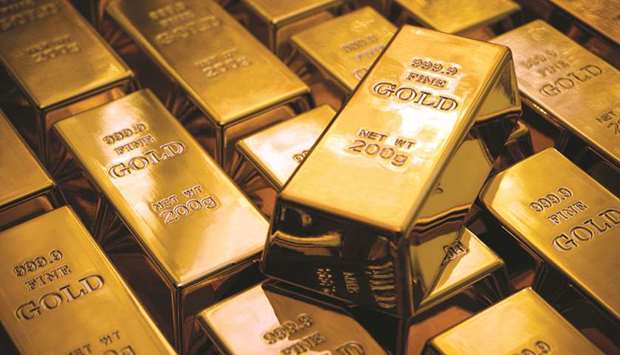With prices heading for their biggest annual rally since 2010, gold trading on futures contracts has surged this year and investors are once again adding the precious metal to their portfolios.
That’s prompted hedge funds, commodity exchanges and asset managers to seek to capitalise by selling tools that make trading gold easier or more profitable.
Among them is Christopher Cruden, who has $110mn allocated to the metal as head of Insch Capital Management. He’s preparing to offer a gold fund that employs his firm’s computer-based trading strategy - it can make bets on rising or falling prices - to more investors.
“We were getting so many requests that we had no choice,” Cruden said in an interview from London. “We’re focused on institutional investors, we’ve never marketed to private investors, but people find our details and ask us to invest their money.”
Such demand is a reversal from a year ago. Prices sank in the last six months of 2016 as the prospect of Donald Trump becoming US president was seen fuelling faster economic growth, which erodes the appeal of alternative assets like precious metals.
After he was elected November 8, gold holdings in exchange-traded funds plunged for 35 days, the longest slump in 12 years.
But investors started snapping up the precious metal again as Trump failed to get his policies passed, the Federal Reserve seemed to baulk at the idea of higher interest rates, and North Korea showed increased capacity to detonate nuclear bombs and long-range missiles to deliver them.
Ray Dalio, leading the world’s largest hedge fund at Bridgewater Associates, said in August that investors should buy gold to hedge against political and economic risks.
“There is an extraordinary amount of interest at the moment,” Cruden said. “Investors have gold glinting in their eye and have lost the ability to reason.” His algorithm, benefiting from a doubling in institutional money in the past six months, seeks to take such emotions out of the decision to buy or sell the metal.
Holdings in ETFs tracked by Bloomberg are up 9% to 2,139 metric tonnes this year, with 114 days of net buying and 69 days of net selling. They’ve soared more than 178 metric tonnes in the period. Will Rhind, former chief executive officer of World Gold Trust Services, is among those who have set up bullion-backed ETFs.
Commodity bourses are also piling in. Hong Kong Exchanges & Clearing and its London Metal Exchange unit began offering precious metal contracts in July that drew active trading.
The Dubai Gold and Commodities Exchange set up a link to London to spur arbitrage trading, according to a statement on Tuesday.
They’re encouraged by gold volumes on New York’s Comex, the biggest futures exchange. In August, trade reached a record 6.55mn contracts, worth about $860bn at current prices.
The metal is also gaining from wider commodity interest.
“Commodities was a dirty word for a long time,” former Morgan Stanley executive Gerardo Tarricone said at a cafe outside his office in London’s Mayfair. “Many people we speak to have zero allocation to commodities, but they’re eager to change that.”
Tarricone will offer a hedge fund next month to bet on gold and other raw materials. Arion Investment Management aims to lure $500mn in funding. It starts with $10mn in capital.
Some remain wary. Troy Gayeski, a portfolio manager at SkyBridge Capital, overseeing $11bn, said last week he hasn’t any gold exposure and isn’t likely to change his mind unless the Fed diverges greatly from its trend toward tightening policy. A return of dollar strength provides a further potential headwind, Bloomberg Intelligence commodities strategist Mike McGlone wrote on Wednesday.
Yet gold traders surveyed by Bloomberg are mostly enthusiastic. They were bullish for 12 straight weeks through September 7, the longest run in a series stretching back to 2015, and only turned cautious two weeks ago after prices hit the highest in a year.
Futures reached $1,362.40 an ounce on September 8 and traded at about $1,292.90 on Thursday.
“People were very, very, very underweight gold; a lot of hedge funds had zero,” said Adrian Day, president of Adrian Day Asset Management, which oversees $185mn. “There’s been a little bit of a scramble to catch up.”



